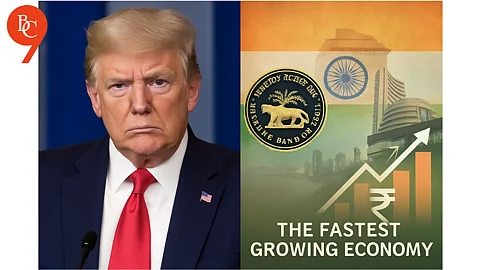

Trump called India a "dead economy", but India rejected the claim citing steady growth and global recognition.
India is now the 4th largest economy, with low inflation and strong market demand.
Despite unemployment and structural issues, India emphasized its sovereignty and ability to resist external pressure.
6th August 2025: Last week the American president referred to the Indian economy as a ‘dead economy’. But what does a dead economy mean? What is the reality? Is there any fact in what he is saying, or, like Shashi Tharoor said, is it a statement from an unpredictable man?
It is very hard to define a dead economy, but generally it is an economy whose growth has been stagnant for a prolonged time and is not showing any signs of improvement for an extended period.
In this situation GDP growth remains negative for a long time, unemployment remains at an all-time high, and investment and consumption remain low. Keeping in mind these criteria, it is a very foolish and ignorant statement to call the Indian economy a dead economy.
Why we cannot refer to the ‘Indian Economy’ as the ‘Dead Economy’
All the economic indicators that show growth of the country have been consistently improving since the LPG (Liberalisation, Privatisation, and Globalisation).
If we remove the years of the COVID pandemic, we can see that the economy is growing at a fast pace even though other countries like the USA are facing financial crises. According to global monetary organisations like the IMF, the World Bank, and Deloitte, India will remain the fastest-growing economy in 2025-26.
India is one of the biggest markets in the world, so global investors are eager to invest in India even after facing infrastructural and political hurdles. Indian markets are showing healthy domestic demand, urban as well as rural.
In 2025, India crossed Japan to become the fourth-largest economy, with 4 trillion dollars. The inflation rate dropped to 2.82% (CPI), which is the lowest since 2019. And subsequent governments are eager to reform the economy through various means, such as disinvestment, tax reforms, capital investment, etc.
Problems in the Indian Economy
Even though the Indian economy is growing at a steady pace, it still has some structural issues, such as a high unemployment rate and low manufacturing growth, which has maximum potential for job creation. The tertiary sector, i.e., the service sector, does not have the capacity to provide jobs for the millions who join the workforce every year.
But these problems don't hold back India or make its economy ‘dead’. India has the potential to tackle the tariffs imposed by US President Donald Trump. Today India told him that India will not come under any pressure and will keep its independent foreign policy, keeping in mind national interest. India also exposed the US's double standard in reaction.
